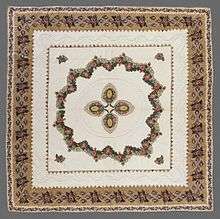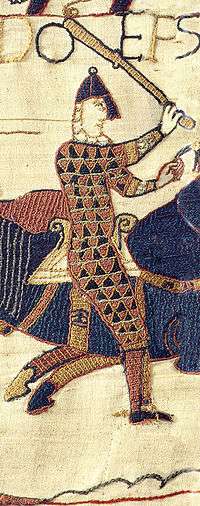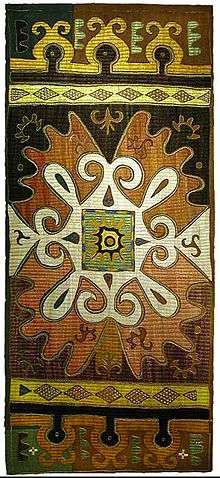Broderie perse

Broderie perse (French for "Persian embroidery") is a style of appliqué embroidery which uses printed elements to create a scene on the background fabric. It was most popular in Europe in the 17th century, and probably travelled from India, as there are some earlier findings there. The technique could be considered an early form of puzzle piecing.
Broderie perse can be done with any printed fabric on any ground, but it originally was worked with Chintz type fabrics. Chintz typically has clearly defined, separated motifs, which were cut out and invisibly applied onto the ground fabric. The typical intention was to create a scene from the motifs, but the decoration could also be random. The resulting fabric was often made into bedspreads, either unlined for summer or quilted for winter. They were typically saved for special occasions, such as guest beds.
See also
External links
Books
"Broderie Perse: The Elegant Quilt" by Barbara W. Barber ISBN 0-89145-875-1
"Flowers In Applique: Fast and Simple Quilting with Printed-Motif Fabrics" by Judy Severson ISBN 0-8442-2658-0



